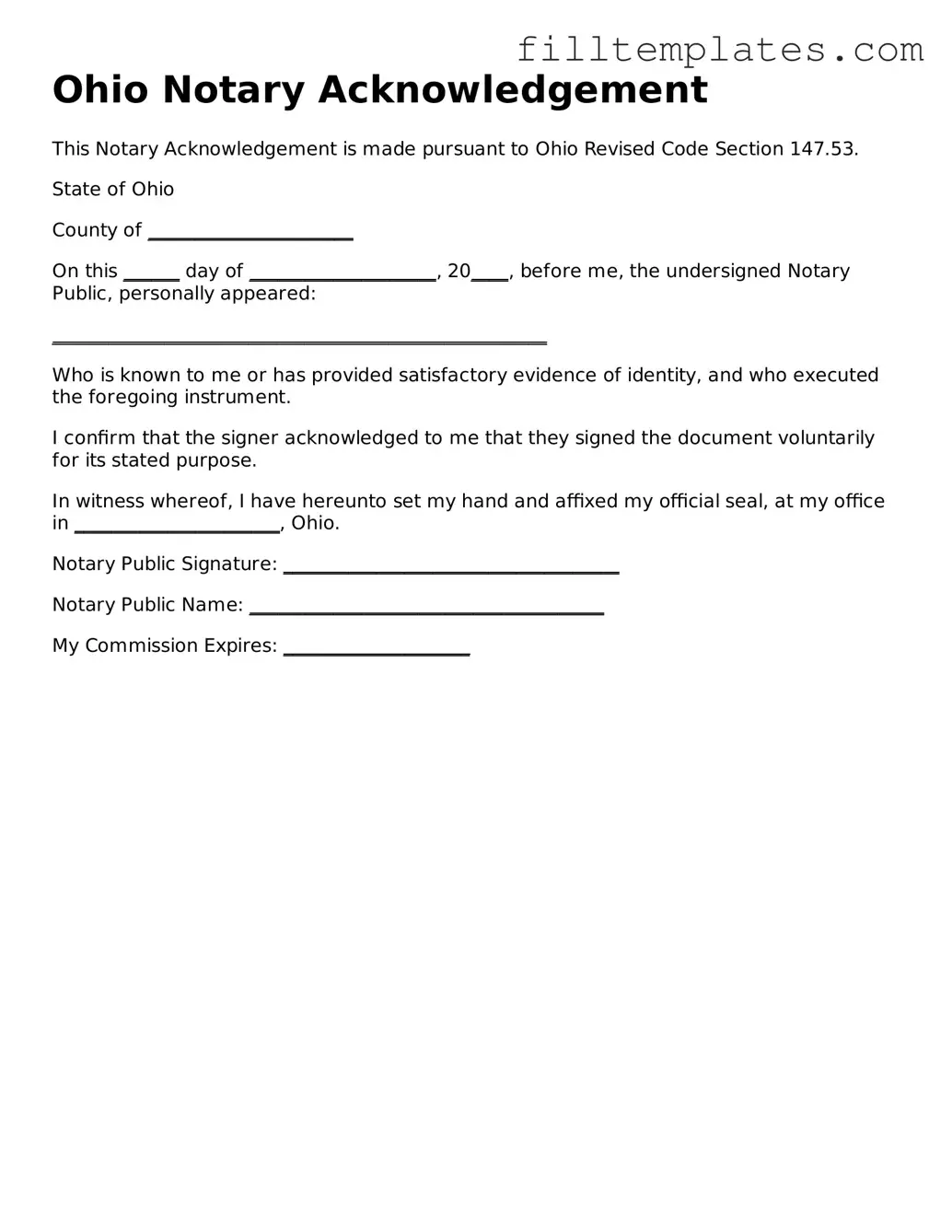Official Notary Acknowledgement Template for the State of Ohio
The Ohio Notary Acknowledgement form is a legal document used to confirm that a person has willingly signed a specific document in the presence of a notary public. This form serves as proof that the individual’s identity was verified and that they understood the contents of the document they were signing. Understanding this form is essential for anyone involved in legal transactions requiring notarization in Ohio.
Open Notary Acknowledgement Editor
